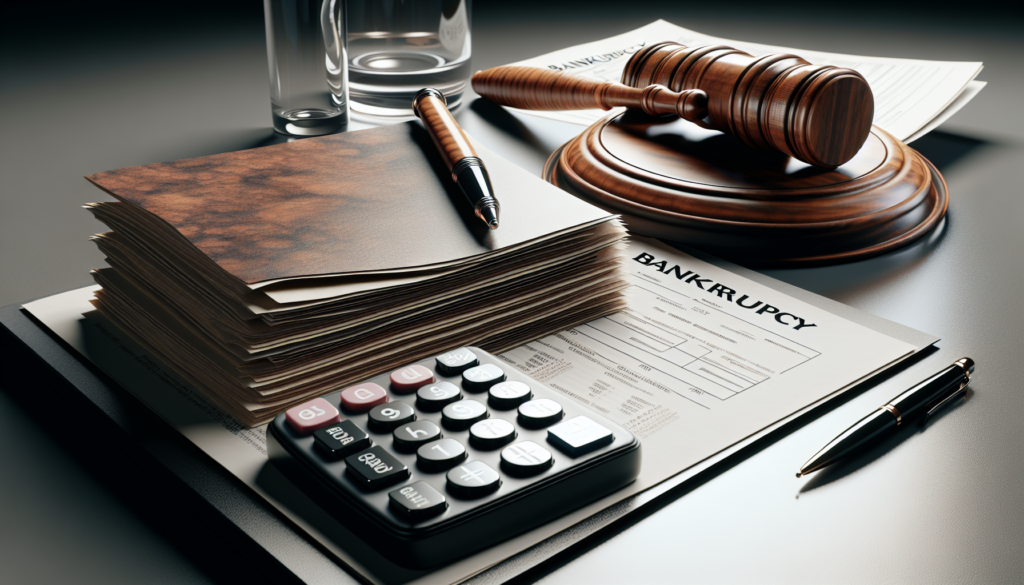Choosing the best chapter of bankruptcy for your situation depends on various factors such as your income, assets, type of debts, and long-term financial goals. Below is an expanded and comprehensive guide on the different types of bankruptcy chapters available and the factors to consider when making a decision.
Chapter 7 Bankruptcy
Overview:
- Chapter 7 bankruptcy, commonly known as “liquidation” or “straight bankruptcy,” is designed to discharge most of your unsecured debts, providing you with a fresh financial start. It involves liquidating non-exempt assets to pay off creditors, but in many cases, debtors can keep most or all of their assets due to state and federal exemptions.
Best For:
- Individuals with Low Income and Few Assets: Chapter 7 is ideal for those who cannot afford to repay their debts and do not have significant assets to lose. It’s particularly beneficial for people who have lost their jobs, faced significant medical expenses, or experienced other financial hardships that make it impossible to repay debts.
- Those with Primarily Unsecured Debt: This type of bankruptcy is best suited for those whose debts are mostly unsecured, such as credit cards, personal loans, and medical bills.
Pros:
- Quick Process: The entire process typically takes about 3 to 6 months from filing to discharge. This is relatively quick compared to other forms of bankruptcy, allowing you to move on with your life sooner.
- Debt Discharge: Most unsecured debts, such as credit card debt, medical bills, and personal loans, are discharged, relieving you of the obligation to repay these debts.
- No Repayment Plan: Unlike Chapter 13, there is no repayment plan. You are not required to pay back a portion of your debts over time, which can be a relief if you have little or no disposable income.
Cons:
- Asset Liquidation: Non-exempt assets may be sold by the bankruptcy trustee to pay off creditors. However, many people can exempt enough property to avoid losing significant assets.
- Credit Impact: Chapter 7 stays on your credit report for up to 10 years, which can affect your ability to obtain new credit, rent housing, or even get certain jobs.
- Eligibility Requirements: You must pass a means test to qualify for Chapter 7. This test compares your income to the median income in your state to determine if you have enough disposable income to repay your debts under a Chapter 13 plan.

Chapter 13 Bankruptcy
Overview:
- Chapter 13 bankruptcy, also known as a “reorganization” bankruptcy, allows individuals to repay all or a portion of their debts over a period of three to five years. It is designed for those with a regular income who can afford to repay some of their debts but need a structured way to do so.
Best For:
- Individuals with a Regular Income: If you have a steady income and can afford to make regular payments, Chapter 13 is often the better choice. It allows you to keep your property while repaying your debts over time.
- Homeowners Facing Foreclosure: Chapter 13 is beneficial for those who want to avoid foreclosure and keep their homes. It allows you to catch up on mortgage payments and other secured debts through a repayment plan.
- Those with Significant Secured Debts: If you have significant secured debts like a car loan or mortgage and want to keep these assets, Chapter 13 allows you to reorganize your debts and pay them off over time.
Pros:
- Asset Protection: You can keep all your property, including non-exempt assets, while making payments under the court-approved plan.
- Debt Repayment: The repayment plan helps you manage your debts and can make it easier to budget and plan your finances. It can also lower the total amount of debt you repay if your creditors agree to accept less than the full amount owed.
- Foreclosure Prevention: Chapter 13 can stop foreclosure proceedings and allow you to catch up on missed mortgage payments over time, potentially saving your home.
Cons:
- Longer Process: The repayment plan lasts three to five years, which is a longer commitment than Chapter 7. It requires consistent income and discipline to adhere to the payment schedule.
- Monthly Payments: You must make regular monthly payments to the bankruptcy trustee, which can be a strain if your financial situation changes.
- Credit Impact: Chapter 13 stays on your credit report for up to 7 years, which can impact your credit score and ability to obtain new credit, though it’s generally viewed more favorably than Chapter 7 because it involves repaying some of your debt.
Chapter 11 Bankruptcy
Overview:
- Chapter 11 bankruptcy is primarily used by businesses, but it is also available to individuals with very high levels of debt. It allows for the reorganization of debts while the business continues to operate or while the individual continues to manage their financial affairs.
Best For:
- Businesses: Chapter 11 is most commonly used by businesses that need to restructure their debts while continuing to operate.
- High Net-Worth Individuals: Individuals with complex financial situations or significant debt levels that exceed the limits for Chapter 13 may find Chapter 11 to be a suitable option.
Pros:
- Business Continuation: Allows businesses to keep operating while restructuring their debts. This helps maintain business relationships and preserve jobs.
- Flexible Debt Reorganization: Chapter 11 offers more flexibility in how debts are restructured and repaid, which can be tailored to complex financial situations.
Cons:
- Complex and Expensive: The process is more complex and costly than Chapter 7 or Chapter 13, making it less suitable for most individuals.
- Long Process: Chapter 11 cases can take several years to complete due to the complexity of the debt reorganization plan.
Factors to Consider
- Income and Assets:
- Low Income, Few Assets: Chapter 7 is ideal for individuals with limited income and minimal assets, as it allows for quick debt discharge.
- Steady Income, Significant Assets: Chapter 13 is better for those who have a regular income and valuable assets they want to protect, such as a home or car.
- Type of Debt:
- Unsecured Debt: If your debt is primarily unsecured, such as credit cards and medical bills, Chapter 7 can provide a swift discharge.
- Secured Debt: If you have significant secured debts like a mortgage or auto loan, Chapter 13 can help you keep your assets while catching up on payments.
- Timeframe:
- Quick Resolution: Chapter 7 typically takes a few months, making it suitable for those seeking immediate relief.
- Structured Repayment: Chapter 13 involves a longer repayment period, which can be advantageous for structured debt management and asset protection.
- Credit Impact:
- Both Chapter 7 and Chapter 13 have a significant impact on your credit score. Chapter 7 remains on your credit report for up to 10 years, while Chapter 13 stays for up to 7 years. However, Chapter 13 is generally viewed more favorably by creditors because it involves a repayment plan.
- Future Financial Planning:
- Immediate Debt Relief: Chapter 7 provides a quick fresh start by discharging most unsecured debts.
- Long-Term Debt Management: Chapter 13 allows for a structured approach to debt repayment and asset retention, offering a longer-term solution for financial stability.
The best chapter of bankruptcy depends on your specific financial circumstances, the type of debt you have, and your long-term financial goals. Chapter 7 is generally better for those who need a quick discharge of unsecured debts and have few assets, while Chapter 13 is suitable for those who can repay a portion of their debts and need to protect their property. Chapter 11 is more suited for businesses and individuals with high debt levels requiring complex debt restructuring.
Consulting with a bankruptcy attorney can provide personalized advice based on your situation and help you navigate the complexities of bankruptcy law to determine the most suitable option for you.



Get a Free Bankruptcy Case Evaluation